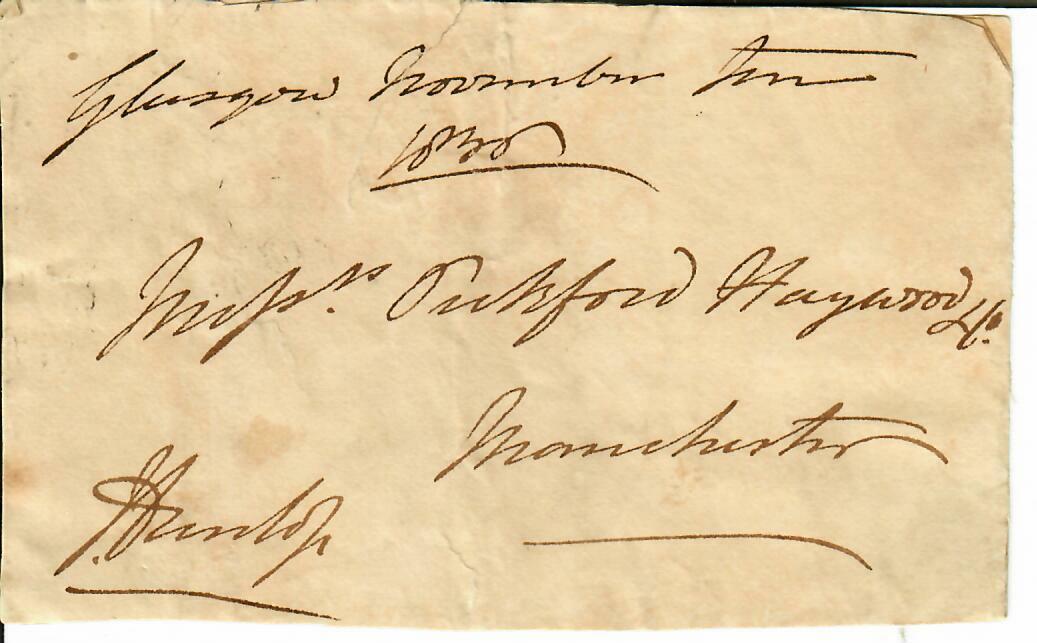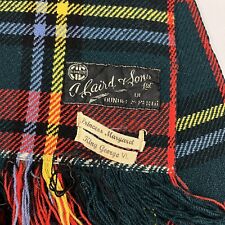 On eBay Now...
On eBay Now...\"Scottish Laird\" James Dunlop of Dunlop Hand Written Envelope For Sale

When you click on links to various merchants on this site and make a purchase, this can result in this site earning a commission. Affiliate programs and affiliations include, but are not limited to, the eBay Partner Network.
\"Scottish Laird\" James Dunlop of Dunlop Hand Written Envelope:
$699.99
Up for sale a VERY RARE! "Scottish Laird" James Dunlop of Dunlop Hand Written Envelope Dated 1830.
ES-4241
Lieutenant General James Wallace Dunlop 21st
of that ilk (19 June 1759 – 30 March 1832) was a
Scottish Laird and British military officer who distinguished himself in India
and the Napoleonic Wars. Dunlop led the left column at the Battle of Seringapatam and
commanded the 5th Division at Battle of Fuentes de Oñoro.
The Duke of
Wellington regarded his retirement from the military as "...a
real loss" though Dunlop subsequently went on to have a
successful career in politics. James Wallace Dunlop was born on 19 June 1759,
the fifth son of John Dunlop of Dunlop, Ayrshire and Frances Anna Dunlop (née
Wallace), the daughter of Sir Thomas Wallace of Craigie. In 1784 he became the 21st Dunlop when his father
transferred the estates to him. He married Julia Baille, the daughter
of a Monkton landowner, on
20 July 1802. They had five children, three sons and two daughters. Dunlop died
at his family home Newfield, Southwick, Kirkcudbrightshire, on 30
March 1832.
On
16 December 1777, James Dunlop enlisted as an Ensign in the newly
established 82nd Foot, a regiment raised from the Duke
of Hamilton's estates in the Lowlands, for service in the American Revolutionary Wars. He
was promoted to Lieutenant in January 1778 and was immediately dispatched
to Nova Scotia.
Dunlop
and his regiment were sent to reinforce the British garrison in New York in the beginning of 1779, but their transport
vessel was wrecked off the coast of New Jersey and the few survivors, of which Dunlop was
one, were all captured. He was later released in exchange for
American prisoners, and joined the 80th Regiment of Foot which was then sent to Virginia. In April 1781 Dunlop was of the seizure of Chesapeake Estuary, before joining a detachment charged
with holding Cape Fear. Following the surrender of Cornwallis at Yorktown, Dunlop commanded
mounted troops, covering the garrison's withdrawal from Wilmington.
Thereafter he rejoined the 82nd and served on the Halifax Station,
where he was promoted to captain on 6 May 1782. With
cessation of hostilities in 1783, the regiment was sent home but the troopship
again encountered difficulties, shipping water and arriving in Antigua instead. The regiment eventually made it back to
Scotland in 1784 when it was disbanded and Dunlop found himself on half-pay.
Shortly afterwards however he was given the Dunlop estates by his father and
thus became the 21st Dunlop of that ilk. On 25 December 1787 Dunlop was
transferred to India as Captain in the 77th Foot, a regiment drawn mainly from his own estates, and
one of four new regiments which, along with the 74th, 75th and 76th, were requested by the Board of Control for the Affairs
of India. These regiments were not popular with the East India Company who
objected to paying for four regiments that were thought to be surplus to
requirements. Initially refused transportation on Company ships, a compromise
was agreed whereby half the officers would be taken from the Company's own
unemployed officers. Dunlop served under Cornwallis in
the Third Anglo-Mysore War against
the forces of Tipu Sultan. He was made Deputy
Paymaster-General to the British contingent of the Bombay Army, then later, the
military secretary to the Bombay Government. Promoted to Brevet Major on 1
March 1794, Dunlop was confirmed Major of his regiment
on 15 September 1795 and promoted to Lieutenant-Colonel of
the 77th Foot on 12 December 1795. When news of his promotion arrived in
India, Dunlop resigned his staff appointments and rejoined his regiment. After
leading a successful campaign in Malabar, he became the senior officer at Kochi Kerala.
Dunlop
commanded a brigade in the Fourth Anglo-Mysore War and
served at the Battle of Seedaseer 6
March 1799. Dunlop received a severe sword wound
whilst leading the left column at the Storming of Seringapatam on
4 May. Tipu Sultan, who was killed during the battle, had his lands
redistributed and Dunlop played a role in securing British control of Kanara before returning home in 1800. There was a brief
period of peace following the Treaty of Amiens on 25 March 1802, but hostilities with
France were resumed in May 1803. On 25 September 1803, Dunlop was appointed
Colonel in the Army of Reserve, which had been raised specifically for the
purpose of home defence, and was given command of a garrison battalion. He
exchanged regiments again, joining the 59th Foot on 31 March 1804, and was stationed in Kent,
guarding the coast against an expected French invasion. He was made Brigadier-General on 11 February 1805 and sent to serve
in Cornwall.
Related Items:Vintage 1967 Royal Doulton The Laird 8" Porcelain Scottish Figurine HN2361
$65.00
"Scottish Laird" James Dunlop of Dunlop Hand Written Envelope
$699.99
Vintage A. Laird & Sons Scottish Wool Plaid Blanket Dundee & Perth 40s 50s
$329.99








